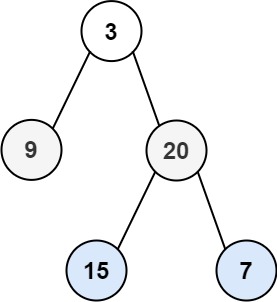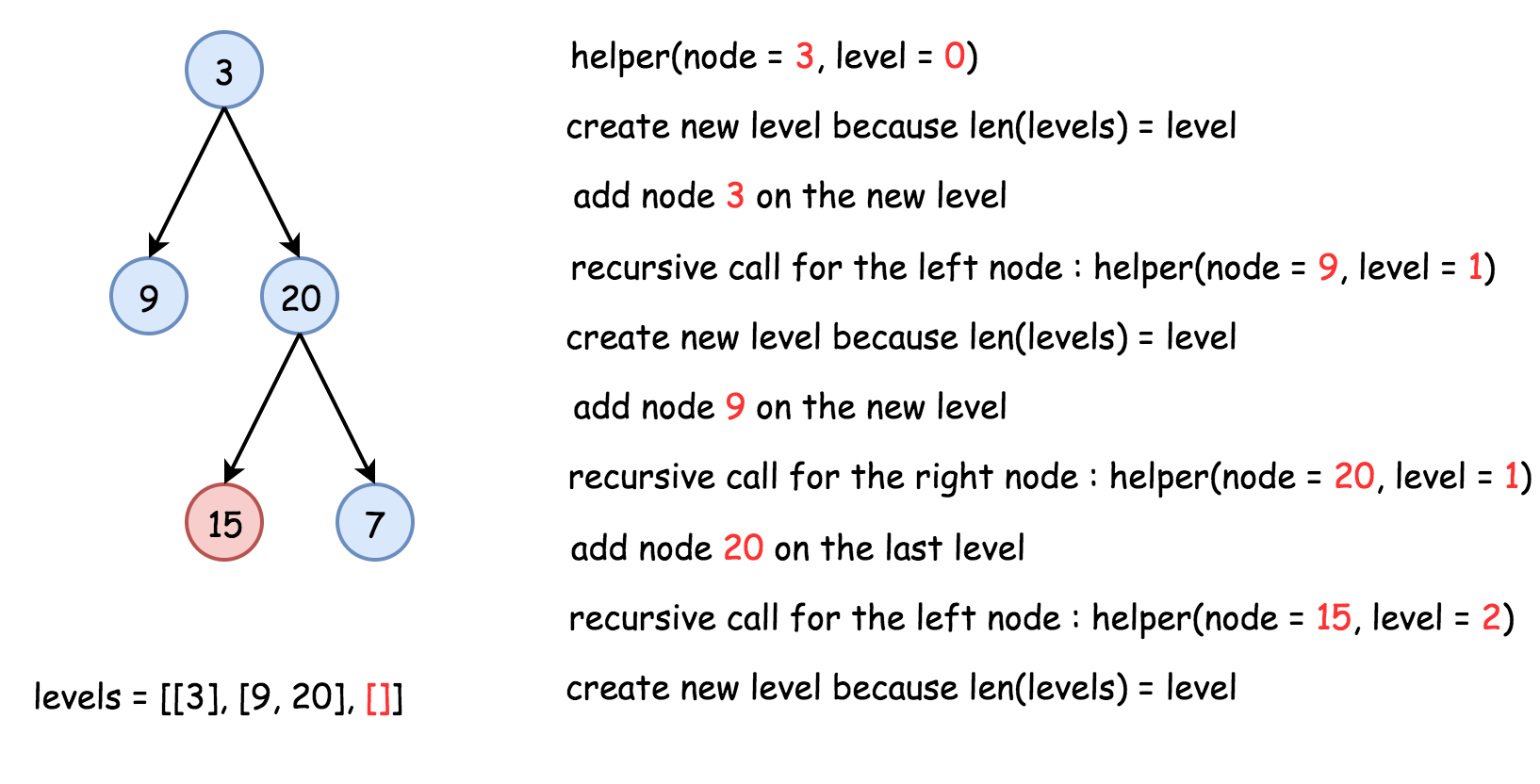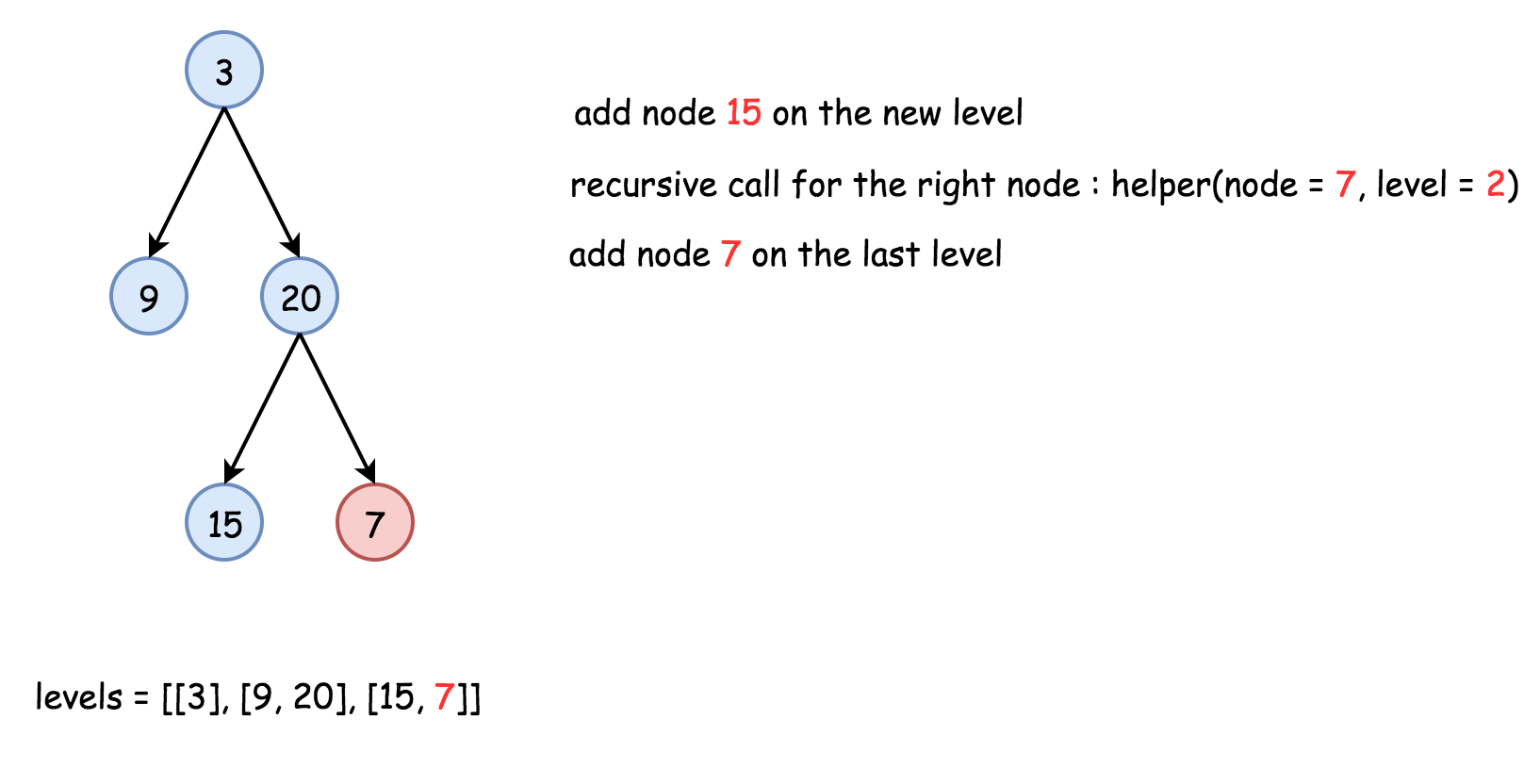Problem
Given the root of a binary tree, return the level order traversal of its nodes’ values. (i.e., from left to right, level by level).
Examples
Example 1:

Input: root = [3,9,20,null,null,15,7]
Output: [[3],[9,20],[15,7]]
Example 2:
Input: root = [1]
Output: [[1]]
Example 3: Input: root = [] Output: []
Constraints:
- The number of nodes in the tree is in the range
[0, 2000]. -1000 <= Node.val <= 1000
Solution
/**
* Definition for a binary tree node.
* struct TreeNode {
* int val;
* TreeNode *left;
* TreeNode *right;
* TreeNode() : val(0), left(nullptr), right(nullptr) {}
* TreeNode(int x) : val(x), left(nullptr), right(nullptr) {}
* TreeNode(int x, TreeNode *left, TreeNode *right) : val(x), left(left), right(right) {}
* };
*/Recursion - O(n) time - O(n) space
- First ensure that the tree is not empty, then call recursively the function
helper(node, level), which takes the current node and its level as the arguments. - Compare the number of a current level
len(levels)with a node levellevel. - If you’re still on the previous level - add the new one by adding a new list into
levels. - Append the node value to the last list in
levels. - Process recursively child nodes if they are not
None:helper(node.left / node.right, level + 1).


class Solution {
public:
vector<vector<int>> levels;
void helper(TreeNode* node, int level) {
if (levels.size() == level) levels.push_back(vector<int>());
levels[level].push_back(node->val);
if (node->left != nullptr) helper(node->left, level + 1);
if (node->right != nullptr) helper(node->right, level + 1);
}
vector<vector<int>> levelOrder(TreeNode* root) {
if (root == nullptr) return levels;
helper(root, 0);
return levels;
}
};Queue - O(n) time - O(n) space
Keep nodes of each tree level in the queue structure, which typically orders elements in a FIFO (first-in-first-out) manner.
The zero level contains only one node root. The algorithm is:
- Initiate queue with a
rootand start from the level number0:level = 0. - While the queue is not empty
- Start the current level by adding an empty list into the output structure
levels. - Compute how many elements should be on the current level: it’s a queue length.
- Pop out all these elements from the queue and add them to the current level.
- Push their child nodes into the queue for the next level.
- Go to the next level
level++.
- Start the current level by adding an empty list into the output structure
class Solution {
public:
vector<vector<int>> levelOrder(TreeNode* root) {
vector<vector<int>> levels;
if (root == NULL) return levels;
deque<TreeNode*> queue;
queue.push_back(root);
int level = 0;
while (!queue.empty()) {
// start the current level
levels.push_back({});
// number of elements in the current level
int level_length = queue.size();
for (int i = 0; i < level_length; ++i) {
TreeNode* node = queue.front();
queue.pop_front();
// fulfill the current level
levels[level].push_back(node->val);
// add child nodes of the current level
// in the queue for the next level
if (node->left != NULL) queue.push_back(node->left);
if (node->right != NULL) queue.push_back(node->right);
}
// go to next level
level++;
}
return levels;
}
};